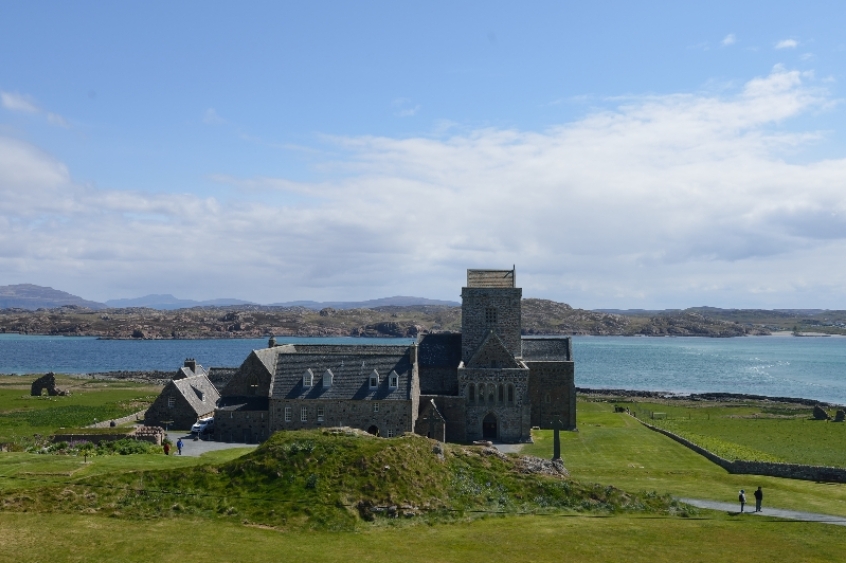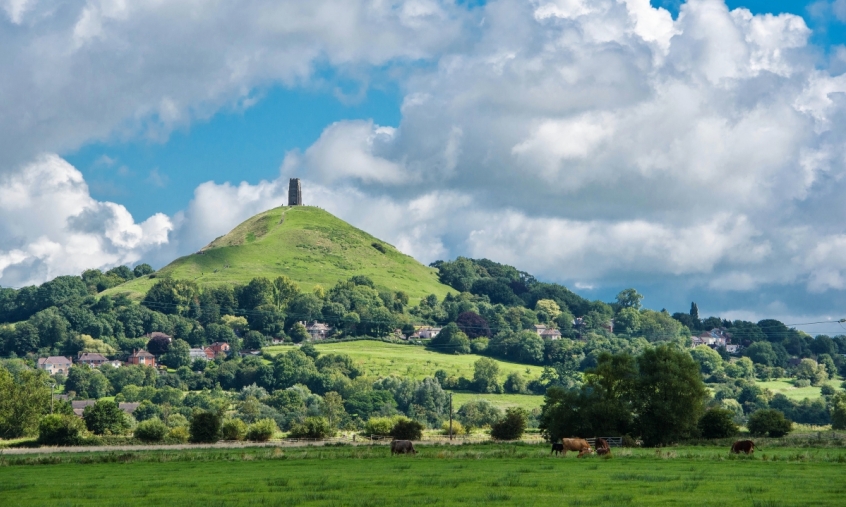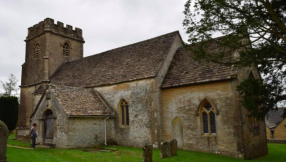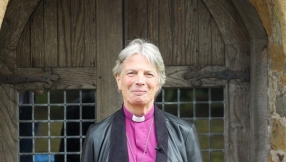Two summers ago one of my best friends walked a 60 mile journey. He began at Melrose Abbey, following the ancient route of St Cuthbert's Way and parts of Hadrian's Wall before ending his journey at Lindisfarne (Holy Island). He walked entirely alone for several days. At the end of each day he checked in with friends and family via social media. A keen photographer and thinker, he also shared highlights and brief reflections about his journey. The rain held off, the knees held up, he was rewarded with tranquil scenery and time alone with God. It was fascinating to follow the story. He was engaging in that ancient Christian practice, the pilgrimage.

The National Trust describes a pilgrimage in this way: 'A pilgrimage is a devotional practice consisting of a prolonged journey, often undertaken on foot or on horseback, toward a specific destination of significance. It is an inherently transient experience, removing the participant from his or her home environment and identity. The means or motivations in undertaking a pilgrimage might vary, but the act, however performed, blends the physical and the spiritual into a unified experience.'
Blending the physical and the spiritual into a unified experience, and becoming aware of that, sounds like an experience worth striving towards. And I suspect there's a universal appeal about the idea of taking yourself out of the familiar in the hopes of achieving precisely that. My home church, in the UK, currently employs team members who've travelled all the way from Germany, Poland, the USA and New Zealand. Some of the children who grew up in my church have now left the area to work further afield in Africa, Germany and Switzerland. Do these modern-day missionaries experience the spiritual elements of journeying towards something? Do they find new inspiration in being apart from their everyday lives, set loose from the limitations which home might place upon their identity? Do they experience, in part, what we might understand as pilgrimage?
A good distance away from most of us is Iona, a tiny and beautiful Hebridean island off the west coast of Scotland, the cradle of Christianity in Scotland. It was there in 563AD the Irish monk Columba established a monastic settlement that evangelised large parts of Scotland and the north of England and became an important centre of European Christianity. In the Middle Ages it became the site of a Benedictine abbey, and over the centuries it has attracted many thousands of people on their own pilgrim journeys.

The daily services of the Iona Community in the Abbey church and worship elsewhere on the island are open to all. There is a year-round population of over 100; long-established island families as well as more recent arrivals, including those who work for the Iona Community in its centres as staff or volunteers. The abbey is now managed by Historic Environment Scotland; the Iona Community remains in residence as a living, worshipping presence. The islanders, the Iona Community and Historic Environment Scotland, work together to maintain Iona as a place of welcome.
There are lots of places to stay on Iona, retreat centres, hotels, B&Bs, camping and hostels.
Alternatively, the Iona Community also has a centre on Mull at Camas which offers kayaking, abseiling, swimming and wild camping.
The Abbey itself is open daily but the Abbey Residential Centre on Iona is temporarily closed for refurbishment and scheduled to reopen in 2020 when residential guests can enjoy a varied programme.
The British Pilgrimage Trust has a fascinating website with a wealth of information about what it means to experience a pilgrimage. The website includes a huge selection of ancient routes to follow with variable duration. These are primarily walking pilgrimages with a wide range of interesting destinations. It suggests that the thousands of cathedrals, churches, and chapels of Britain, whether in use, redundant or ruined are holy places. Furthermore attending the glorious musical service of Evensong, performed free of charge in churches and cathedrals across Britain is a worthwhile addition to your personal pilgrimage.
In addition to ancient buildings, water has historical links to pilgrimage. Britain was once famed throughout Europe as a land of water. Our freshwater springs were sweet and ever-flowing, providing mineral richness and clean drinking for all inhabitants of the land. Great trees, particularly the majestic yew, sometimes pre-dating the birth of Jesus, are a reminder of the beauty and strength of creation and hold a special meaning for many a pilgrim. Ancient monuments and hill tops are often considered to be holy places, where some find it easier to contemplate and pray.

Glastonbury has longstanding connections with the myth that Christ himself may have visited the area with Joseph of Arimathea and 'walked upon England's mountains green'. It's part of an ongoing story which captured the imagination of many a pilgrim of old. Rich in history, heritage, myths, legends and spiritual enrichment there has been a church on the site of Glastonbury Abbey for at least 1500 years with evidence of even earlier occupation. Even though Glastonbury is perhaps best known for the revelry of its five day festival of performing arts (in June 2019) the area still boasts some tranquil spots worthy of the modern pilgrim. Glastonbury Tor, known for its Christian and pagan connections, is a hill just outside the town of Glastonbury with spectacular 360° views from the top.
I recall Good Friday walks with fondness. My school friends and I would spend the whole day walking to the top of our local hill for a picnic. Everyone did it. It was a wonderful day out in the fresh air but I had absolutely no idea why we were doing it. There was no spiritual intentionality on my part, no sense of searching for something. It was a very long walk, but it wasn't a personal pilgrimage.
Ancient pilgrims travelled using the transport methods of their day, mentioned earlier, such as 'on foot' and 'on horseback'. These relatively slow methods of transport made for journeys which might last for days on end. And while this slow journeying seems to be an essential component of the pilgrimage experience perhaps the intentional setting aside of time, the will to keep stepping away from something, and towards something else, also plays a key part.
Friends of mine recently took time to take turns praying in a quiet room which was set aside for that very purpose. They reported deep spiritual connections and breakthroughs. Perhaps it's not only the physical distance covered during a pilgrimage which is restorative, it's the spiritual intentionality, the deliberate setting aside, the seeking after God and the determined quest for answers which generates fresh meaning.
Val Fraser is an author and journalist. Follow her on Twitter @ValFraserAuthor.













